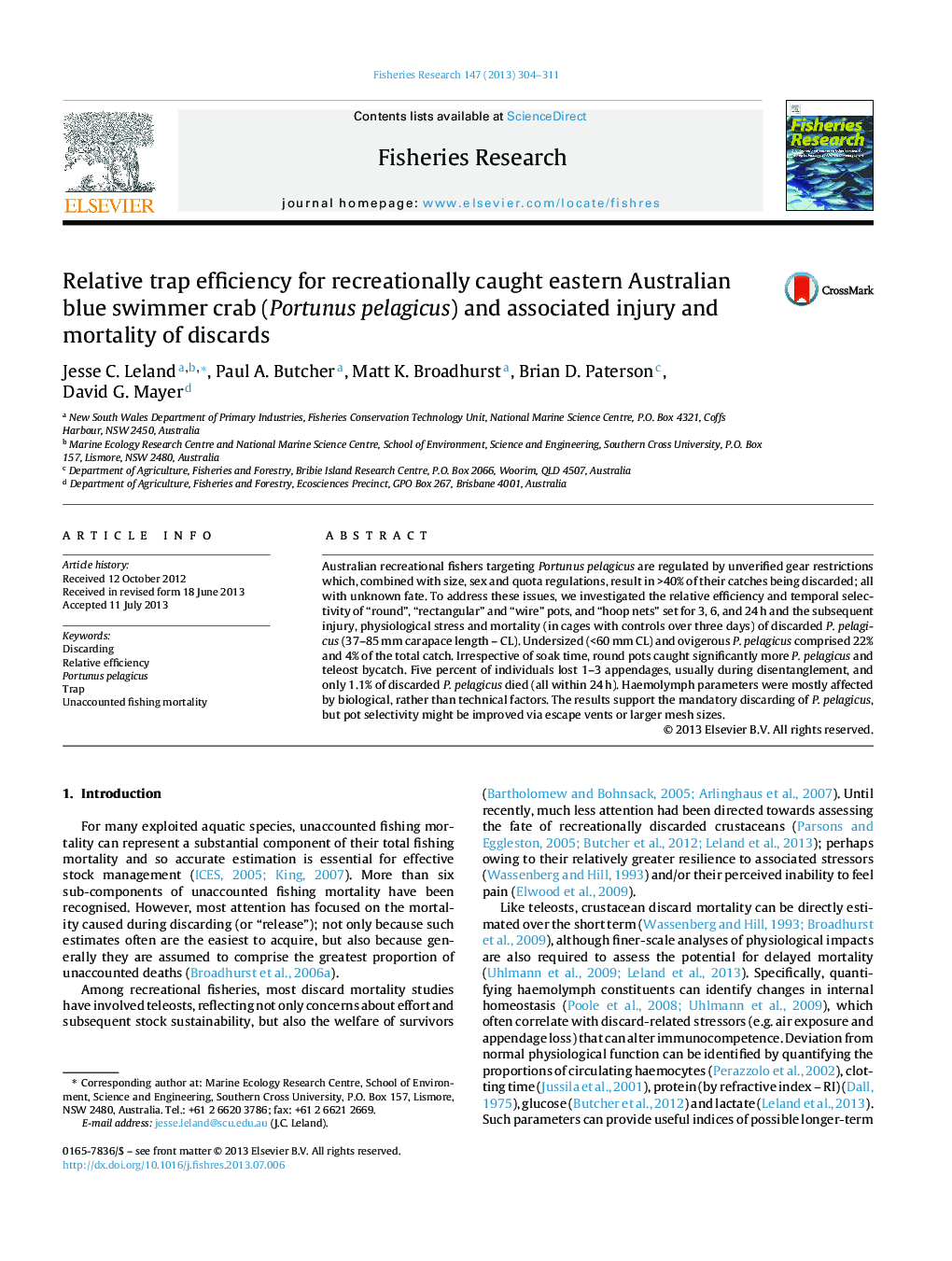| Article ID | Journal | Published Year | Pages | File Type |
|---|---|---|---|---|
| 4543106 | Fisheries Research | 2013 | 8 Pages |
Australian recreational fishers targeting Portunus pelagicus are regulated by unverified gear restrictions which, combined with size, sex and quota regulations, result in >40% of their catches being discarded; all with unknown fate. To address these issues, we investigated the relative efficiency and temporal selectivity of “round”, “rectangular” and “wire” pots, and “hoop nets” set for 3, 6, and 24 h and the subsequent injury, physiological stress and mortality (in cages with controls over three days) of discarded P. pelagicus (37–85 mm carapace length – CL). Undersized (<60 mm CL) and ovigerous P. pelagicus comprised 22% and 4% of the total catch. Irrespective of soak time, round pots caught significantly more P. pelagicus and teleost bycatch. Five percent of individuals lost 1–3 appendages, usually during disentanglement, and only 1.1% of discarded P. pelagicus died (all within 24 h). Haemolymph parameters were mostly affected by biological, rather than technical factors. The results support the mandatory discarding of P. pelagicus, but pot selectivity might be improved via escape vents or larger mesh sizes.
